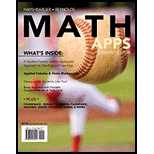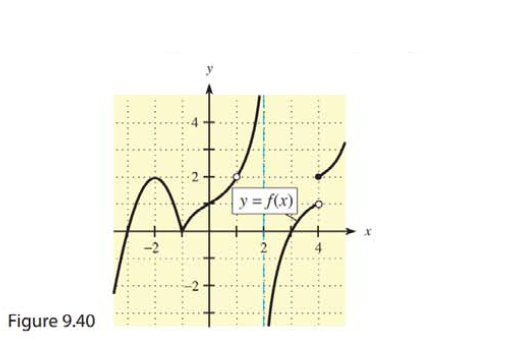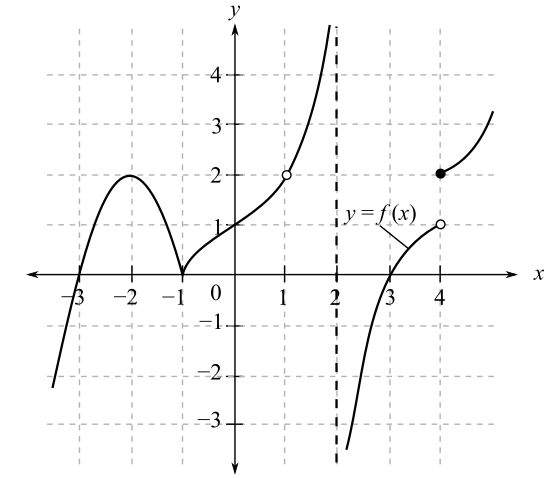
Concept explainers
In Problems 1-6, use the graph of

(a)
The value of
Answer to Problem 1RE
Solution:
The value of
Explanation of Solution
Given Information:
The graph of

The function is
Explanation:
Consider the provided graph,

The value of c is equal to
Hence, the value of
(b)
The value of
Answer to Problem 1RE
Solution:
The value of
Explanation of Solution
Given Information:
The graph of

The value of c is
Explanation:
Consider the provided graph,

The value of c is equal to
The limit from the left is represented by
The
From the graph,
And,
Since,
Therefore, the value of
Want to see more full solutions like this?
Chapter 9 Solutions
MATH APPS
- Chatgpt give wrong answer No chatgpt pls will upvotearrow_forward@when ever one Point sets in x are closed a collection of functions which separates Points from closed set will separates Point. 18 (prod) is product topological space then VaeA (xx, Tx) is homeomorphic to sul space of the Product space (Txa, prod). KeA © The Bin Projection map B: Tx XP is continuous and open but heed hot to be closed. A collection (SEA) of continuos function oha topolgical Space X se partes Points from closed sets inx iff the set (v) for KEA and Vopen set in Xx from a base for top on x.arrow_forwardNo chatgpt pls will upvotearrow_forward
- Make M the subject: P=2R(M/√M-R)arrow_forwardExercice 2: Soit & l'ensemble des nombres réels. Partie A Soit g la fonction définie et dérivable sur R telle que, pour tout réel x. g(x) = - 2x ^ 3 + x ^ 2 - 1 1. a) Étudier les variations de la fonction g b) Déterminer les limites de la fonction gen -oo et en +00. 2. Démontrer que l'équation g(x) = 0 admet une unique solution dans R, notée a, et que a appartient à | - 1 ;0|. 3. En déduire le signe de g sur R. Partie B Soit ƒ la fonction définie et dérivable sur R telle que, pour tout réel s. f(x) = (1 + x + x ^ 2 + x ^ 3) * e ^ (- 2x + 1) On note f la fonction dérivée de la fonction ƒ sur R. 1. Démontrer que lim x -> ∞ f(x) = - ∞ 2. a) Démontrer que, pour tout x > 1 1 < x < x ^ 2 < x ^ 3 b) En déduire que, pour x > 1 0 < f(x) < 4x ^ 3 * e ^ (- 2x + 1) c) On admet que, pour tout entier naturel n. lim x -> ∞ x ^ n * e ^ (- x) = 0 Vérifier que, pour tout réel x, 4x ^ 3 * e ^ (- 2x + 1) = e/2 * (2x) ^ 3 * e ^ (-2x) puis montrer que: lim x -> ∞ 4x ^ 3 * e…arrow_forwardshow me pass-to-passarrow_forward
 College AlgebraAlgebraISBN:9781305115545Author:James Stewart, Lothar Redlin, Saleem WatsonPublisher:Cengage Learning
College AlgebraAlgebraISBN:9781305115545Author:James Stewart, Lothar Redlin, Saleem WatsonPublisher:Cengage Learning
